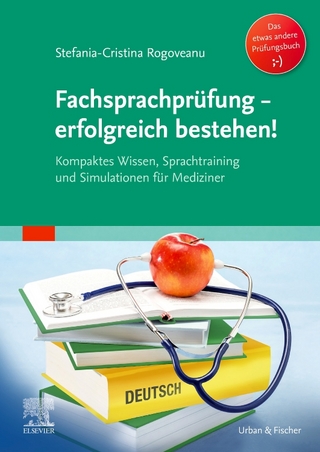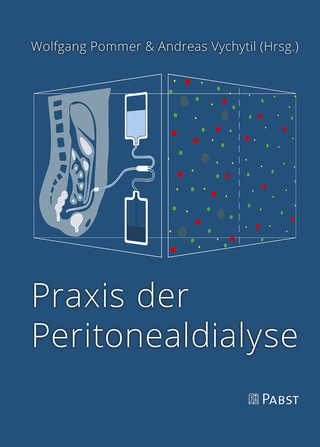
Rapid Diagnosis of Dengue Outbreaks in Resource Limited Facilities
Anchor Academic Publishing (Verlag)
978-3-96067-100-8 (ISBN)
The aim of this study is to compare serological and nucleic acid based methods for early diagnosis of dengue and differentiation of serotypes. For this, Dengue was diagnosed using NS1 antigen, IgM/IgG LF-ICT, IgM µ capture ELISA, RT-PCR and tests were compared. M-PCR was done to identify serotypes.
Text Sample:
CHAPTER 5: DENGUE VIRAL INFECTION AND HOST FACTORS:
Dengue Viral infection:
Dengue virus binds to its receptor mediated by E protein after which it is fused into acidic lysosomes through receptor-mediated endocytosis [37]. Dengue virus enters Langerhans cells of skin through binding between viral proteins and membrane proteins, specifically the C-type lectins such as DC-SIGN/L-SIGN, mannose receptor, heparan sulfate, nLc4Cer and CLEC5A. DEN-2 also binds with HSP70/HSP90, GRP78, CD14-associated protein and two unknown proteins having trypsin resistance and trypsin sensitive properties. DEN1-3 serotypes bind with Laminin receptor while DEN2-4 serotypes bind with an unknown protein as well [24, 38, 39]. The virus genome is translated in membrane bound vesicles on endoplasmic reticulum and new viral proteins replicate viral RNA. Immature virus particles are transported to Golgi apparatus and get released by exocytosis through budding on maturation and infect monocytes and macrophages subsequently. In only few hours after infection, thousands of copies of viral molecules are produced from a single viral molecule leading to cell damage. Viral-encoded RNA-dependent RNA polymerases and other cellular factors are responsible for catalyzing the infection cycle of dengue virus [24]. The viral titres peak around the onset of clinical features, a time when the infection is widespread.
Host Factors:
DF is an important cause of pediatric hospitalization in SEAR. Since 1980s, studies have reported a higher association of DHF with older ages [24, 32, 45, 51]. From 1990-96, the highest age-specific morbidity rates were in the 15 to 34 year age group. Males are commonly infected, although females are prone to severe disease possibly due to accelerated immune response [40-42]. Severe dengue has been observed less frequently in dengue infected black persons than whites [25]. Genetic polymorphisms increasing dengue risk include polymorphisms in genes coding for TNF , mannan binding lectin, CTLA4, TGFbeta, DC-SIGN, PLCE1, HLA-B and G6PD deficiency. Polymorphisms in the genes for the vitamin D receptor and FcGammaR are protective in secondary dengue infection [38, 43].
CHAPTER 6: IMMUNOLOGICAL RESPONSE TO DENGUE:
Immunological Response:
The virus is present in serum, plasma, peripheral blood mononuclear cells for a very short period. The acquired immune response to dengue infection consists of the production of IgM, IgG and IgA, specific for E protein. Detectable levels of anti-dengue antibodies appear few days after fever, leading to two types of responses, primary and secondary.
Primary Immunological Response:
A person previously not infected with flaviviruses (e.g. yellow fever, Japanese encephalitis, tick born encephalitis) or immunized against them, mounts a primary antibody response wherein IgM appears first, rises rapidly and peaks at about 2 weeks after onset of symptoms and declines by 2-3 months. IgG appears in low titers at the end of first week, increases slowly peaking at 2 weeks and declining by 3-6 months. Both IgM and IgG antibodies neutralize dengue virus [1, 6, 7]. The physiological definition of primary dengue infection is characterized by high molar concentration of IgM antibodies and low IgG.
Secondary Immunological Response:
Individuals with immunity due to previous flavivirus infection have pre-existing IgG antibodies which may persist for life (as measured by E/M antigen-coated indirect IgG ELISA). Many B-cell clones responding to the first flavivirus infection are restimulated to synthesize early antibody with a greater affinity for the first infecting virus than for the present infecting virus in every subsequent flavivirus infection. They may also mount a secondary anamnestic IgG antibody response characterized by rapid rise in IgG antibodies by 4-5 days of illness [44]. IgG antibodies have high degrees of cross-reactivity to homologous and heterologous flavivirus antigens. A small percentage of pat
| Erscheinungsdatum | 17.01.2017 |
|---|---|
| Sprache | englisch |
| Maße | 155 x 220 mm |
| Gewicht | 98 g |
| Themenwelt | Medizin / Pharmazie ► Medizinische Fachgebiete |
| Medizin / Pharmazie ► Studium | |
| Schlagworte | dengue fever • Diagnosis • Disease Control • Flavivirus infection • India • Public Health • Viral Infection |
| ISBN-10 | 3-96067-100-8 / 3960671008 |
| ISBN-13 | 978-3-96067-100-8 / 9783960671008 |
| Zustand | Neuware |
| Haben Sie eine Frage zum Produkt? |
aus dem Bereich


